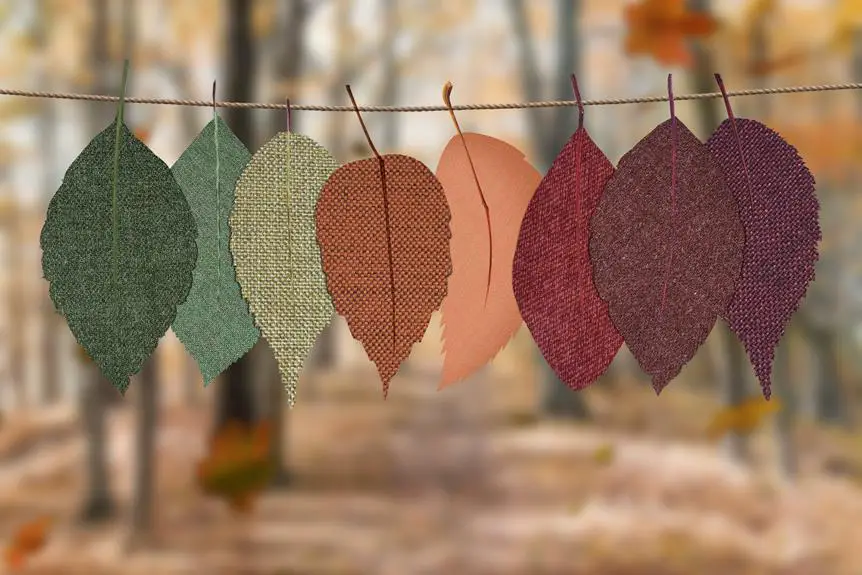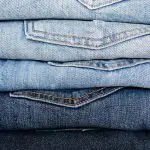When it comes to choosing fabrics, navigating through the plethora of options can feel like trying to find your way through a maze. The choice between viscose and elastane can be particularly perplexing.
Viscose, known for its silky smoothness and breathable nature, may seem like the obvious choice. However, elastane's remarkable stretch and resilience make it a strong contender.
Understanding the nuances of these fabrics is crucial for mastering the art of garment selection. In this comparison, we'll delve into the unique characteristics of both fabrics, their performance, and ideal uses.
By the end, you'll be equipped with the knowledge to make informed decisions about which fabric best suits your needs.
Key Takeaways
- Viscose offers a silky smooth texture, breathability, moisture-wicking fibers, and sustainable production, making it a versatile and comfortable fabric option.
- Elastane provides exceptional elasticity, flexibility, and shape retention, making it ideal for activewear, swimwear, and form-fitting garments.
- When choosing between viscose and elastane, consider specific performance attributes such as moisture absorption, wrinkle resistance, and pilling tendency.
- Fabric blends with elastane, especially with cotton or polyester, enhance durability and shape retention, revolutionizing the longevity of stretchy fabrics.
Qualities of Viscose
If you're looking for a fabric that drapes beautifully and feels soft on the skin, viscose is a great choice. Viscose is known for its silky, smooth texture, making it a popular option for clothing and home textiles. One of the key advantages of viscose is its breathability, allowing air to pass through the fabric and keep you feeling comfortable in warm weather. Additionally, viscose is made from moisture-wicking fibers, which means it can absorb and disperse sweat, keeping you dry and cool.
In addition to its luxurious feel and practical benefits, viscose is also valued for its sustainable production. It's derived from renewable plant materials, such as wood pulp, making it an eco-friendly choice for conscientious consumers. The production process of viscose involves using natural and biodegradable materials, further contributing to its environmentally friendly profile.
Qualities of Elastane
Elastane, also known as spandex, is a highly elastic synthetic fiber that's often added to fabrics to provide stretch and flexibility. This material has several qualities that make it a popular choice in the textile industry:
- Elasticity: Elastane is renowned for its exceptional elasticity, allowing clothing to stretch and move with your body. This quality is particularly beneficial in activewear and form-fitting garments, providing comfort and freedom of movement during various activities.
- Flexibility: Elastane's flexibility enables garments to retain their shape and adapt to the body's movements, making it suitable for a wide range of clothing, from tight-fitting leggings to swimsuits. This flexibility also contributes to the durability of the fabric, as it can withstand frequent stretching without losing its original form.
- Comfort: The addition of elastane to fabrics enhances comfort by providing a soft, stretchy feel against the skin. This quality makes elastane a popular choice for undergarments and everyday wear, as it ensures a snug yet comfortable fit.
These qualities make elastane a versatile and essential component in modern fabric blends, offering both functionality and comfort in various types of clothing.
Performance Comparison
When selecting fabrics for your wardrobe, it's essential to compare the performance of viscose and elastane to make informed choices about comfort and durability.
Viscose is known for its excellent moisture absorption and breathability, making it a great choice for garments that need to keep you cool and dry. In terms of moisture absorption, viscose outperforms elastane, as it can absorb perspiration and disperse it across the fabric, aiding in evaporation and keeping you comfortable.
On the other hand, elastane, also known as spandex or Lycra, is highly prized for its exceptional stretch and recovery properties, providing flexibility and shape retention in clothing. However, elastane offers better wrinkle resistance and has a lower pilling tendency compared to viscose. This means that clothing made with elastane is less likely to develop wrinkles and is more durable against the formation of those pesky little fabric pills that can make your garments look worn out.
Consider the specific performance attributes that matter most to you when choosing between viscose and elastane for your clothing to ensure that you get the comfort and durability you desire.
Uses of Viscose
Viscose's superior moisture absorption and breathability make it ideal for crafting lightweight, breathable garments that keep you cool and comfortable throughout the day. Its versatile nature allows it to be used in various applications, making it a popular choice in both fashion and home textiles.
- Viscose in Fashion: Viscose is a staple in the fashion industry due to its ability to drape beautifully, making it perfect for flowy dresses, blouses, and skirts. Its breathable nature also makes it a top choice for summer clothing, providing a comfortable and stylish option for warm weather.
- Viscose in Home Textiles: In home textiles, viscose is often used in items such as sheets, blankets, and towels. Its moisture-wicking properties make it an excellent material for bedding, providing a comfortable and cool sleeping experience. Additionally, its soft and luxurious feel makes it a desirable choice for towels, adding a touch of elegance to the bathroom.
Whether in fashion or home textiles, the versatility and comfort of viscose make it a sought-after material for creating a wide range of products that prioritize breathability and comfort.
Uses of Elastane
Elastane, also known as spandex or Lycra, offers a multitude of uses that make it a highly sought-after fabric in the fashion and athletic industries. Its stretch and flexibility benefits provide comfort and unrestricted movement, making it ideal for activewear, swimwear, and form-fitting garments.
Additionally, its durability and shape retention properties ensure that clothing maintains its form and support, even with frequent wear and washing.
Stretch and Flexibility Benefits
To achieve optimal stretch and flexibility in your clothing, elastane is a versatile and essential fabric component. Its unique properties provide numerous benefits, making it a popular choice for activewear and everyday clothing:
- Enhanced Range of Motion: Elastane's elasticity allows for unrestricted movement, making it ideal for sportswear and form-fitting garments.
- Shape Retention: The fabric's ability to bounce back to its original form ensures that your clothing maintains its shape and fit, even after repeated wear and washing.
- Comfort and Support: Elastane's stretchiness offers a comfortable and supportive feel, making it an excellent choice for undergarments, leggings, and other tight-fitting apparel.
These qualities make elastane an indispensable component for achieving both comfort and functionality in your wardrobe.
Comfort and Movement
When you're looking for clothing that allows you to move comfortably and confidently, elastane is a fabric you'll want to prioritize.
Elastane offers exceptional comfort and flexibility, making it an ideal choice for activewear and clothing designed for movement. Its ability to stretch and retain its shape provides a comfortable fit that moves with your body, offering unrestricted flexibility.
Additionally, elastane's moisture-wicking properties help to keep you dry and comfortable during physical activities by drawing sweat away from your skin. This fabric also enhances breathability, allowing air to circulate, which further contributes to your overall comfort.
Whether you're engaging in intense workouts or simply seeking everyday comfort, elastane-infused clothing can provide the comfort and range of movement you desire.
Durability and Shape Retention
You'll find that elastane's durability and shape retention make it a valuable choice for clothing that needs to maintain its form and withstand frequent use. Here's why elastane is a top pick for durability and shape retention:
- Fabric Blends: Elastane is often blended with other fabrics like cotton or polyester to enhance their durability and shape retention. This blend creates a fabric that can endure repeated wear and washing without losing its shape.
- Shape Retention: Elastane's unique stretch and recovery properties help garments maintain their shape over time. This is especially beneficial for form-fitting clothing that needs to retain its silhouette after long hours of wear.
- Textile Innovation: The use of elastane in textiles has revolutionized the durability of stretchy fabrics, allowing for greater longevity and shape retention in clothing.
Care Instructions
For the best care of viscose and elastane fabrics, use a gentle detergent and cold water when washing. Viscose, being a delicate fabric, requires extra attention during fabric maintenance. When washing viscose garments, hand washing is preferable to machine washing to prevent damage. Use a mild detergent and cold water, and avoid wringing or twisting the fabric.
Elastane, on the other hand, is more durable but still benefits from gentle care. Machine wash elastane clothing in cold water on a gentle cycle to maintain its elasticity. Both fabrics should be air-dried to prevent shrinkage and preserve their shape.
When it comes to handling and storage, hang viscose and elastane garments to prevent wrinkles. If ironing is necessary, use a low heat setting for both fabrics. Additionally, store these garments in a cool, dry place away from direct sunlight to prevent fading and damage.
Frequently Asked Questions
Are Viscose and Elastane Suitable for People With Sensitive Skin?
For sensitive skin, viscose is a better choice than cotton due to its smooth, soft texture. Elastane can be more suitable than polyester as it has better breathability and flexibility. Both are great options for sensitive skin.
Can Viscose and Elastane Fabrics Be Used for Outdoor or Athletic Wear?
When it comes to outdoor or athletic wear, both viscose and elastane have their merits. Viscose provides excellent breathability and moisture-wicking properties, while elastane offers exceptional stretch and recovery, making them both suitable for active pursuits.
How Do Viscose and Elastane Compare in Terms of Environmental Sustainability?
When comparing viscose and elastane in terms of environmental sustainability, consider their production processes, ethical sourcing, and efforts towards eco-friendly options and textile waste management. Understanding their environmental impact helps in making informed choices.
Can Viscose and Elastane Be Used in Combination to Create a Blended Fabric?
Yes, viscose and elastane can be used in combination to create a blended fabric. The blending process can enhance fabric properties, meeting market demand and aligning with current fashion trends. It's a versatile option for various clothing items.
Are There Any Special Considerations for Caring for Clothing Made From Viscose and Elastane?
When caring for clothing made from viscose and elastane, follow specific instructions to maintain fabric durability. Gentle machine or hand wash in cool water, avoid harsh chemicals, and lay flat to dry to preserve the fabric's quality.
- The Use of Nonwovens in Automotive Interiors - July 11, 2025
- Troubleshooting Common Issues With Nonwoven Fabrics - July 11, 2025
- How Nonwoven Wallpaper Differs From Traditional Paper - July 11, 2025







